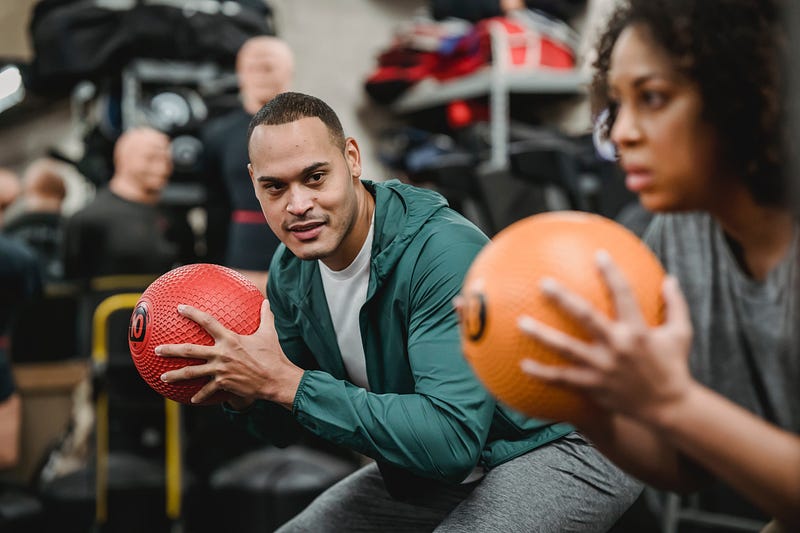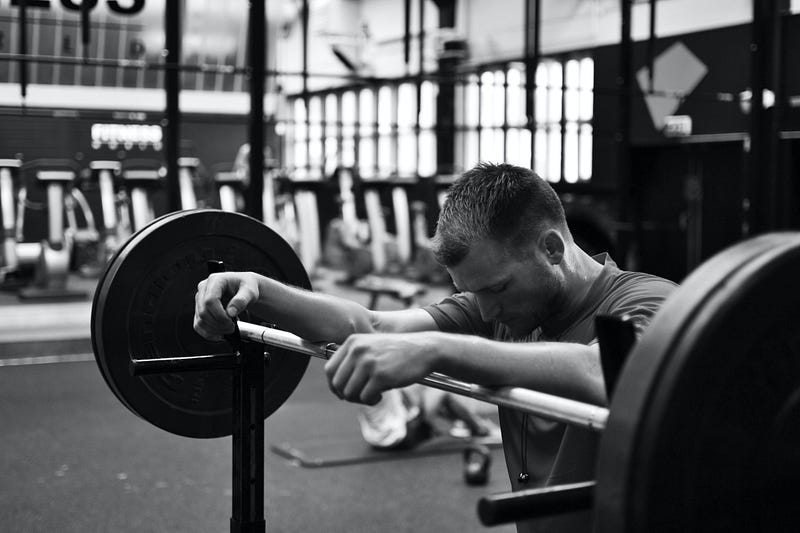Stronger Legs: Debunking Common Squat Myths for Better Fitness
Written on
Chapter 1: Rethinking Lower Body Workouts
If you're striving for stronger legs, you might be trapped in the misconception that squats are the ultimate lower body exercise.

Many fitness enthusiasts and athletes are quick to champion squats as the best option, often overlooking other beneficial movements. In reality, there is no singular 'best' exercise for developing lower body strength; instead, it's essential to incorporate a variety of movements that align with your individual fitness goals.
A common narrative suggests that machine-based exercises are ineffective or even hazardous, but this perspective often overlooks the broader picture. By examining these misconceptions, we can avoid limiting our potential for building lower body strength.
Section 1.1: The Role of Machines in Training
Before diving deeper, I want to clarify my stance: I appreciate squats for their effectiveness, but they do have limitations that can be addressed through other exercises, particularly machine-based ones.
To help you think critically about your workout choices, I've outlined five prevalent myths surrounding lower body training. My aim is to encourage you to explore various machine and calisthenics exercises that can enhance your fitness when squats aren't enough. Making informed decisions in the gym, rather than relying solely on popular trends, will benefit your progress.
Subsection 1.1.1: Myth 1 - Machine Exercises Are Hazardous
Every exercise comes with inherent risks. Just as walking carries its own dangers, movements like the leg press or seated leg extension can be safe and effective when performed correctly. Dismissing an exercise solely based on its perceived danger can limit your options. In fact, I would argue that squats can pose greater risks due to their demands for form and balance.
Always prioritize proper technique, gradual progression, and listen to your body. Pain can serve as a valuable guide if we choose to heed it. As a kinesiologist, I have successfully taught these movements to rehab patients, who often thrive when approached wisely.
The first video explores the misconception that knees should never go over toes during squats, providing insights that challenge this common belief.
Subsection 1.1.2: Myth 2 - Squats Are the Best for Stability
There's a significant misunderstanding surrounding stability training. You cannot isolate stabilizer muscles from primary movers. While certain exercises may emphasize stability based on positioning, all muscles engage to some extent, even when using machines.
If you're seeking to enhance stability, consider alternatives like single-leg lunges or unilateral carries rather than relying solely on squats.
Section 1.2: Myth 3 - Squats Maximize Weight Lifting
Interestingly, you may find that machines can impose greater stress on your leg muscles than back squats can. Machines allow for the isolation of specific muscle groups and angles that a standard squat cannot offer. Your form and back stability will always play a role in limiting your strength with squats, making machines a viable option for maximizing muscle engagement.
Chapter 2: Expanding Your Exercise Repertoire
The second video addresses the safety of deep squats and presents a powerful alternative exercise that can enhance your lower body strength while mitigating risks.
Section 2.1: Myth 4 - Non-Squat Exercises Lack Functionality
The concept of functionality is nuanced. While squats mimic daily movements, the idea of functionality depends on your specific training goals. For instance, runners may benefit more from single-leg drills that replicate their gait, whereas powerlifters will find squats integral to their regimen.
Section 2.2: Myth 5 - Additional Movements Are Redundant
Some individuals worry that incorporating supplementary exercises beyond squats might detract from their ability to lift heavy. This couldn't be further from the truth. A diverse range of leg exercises can enhance robustness and prevent injuries, making workouts more engaging and reducing the risk of burnout.
Bonus: Effective Machine and Calisthenic Exercises
To wrap up, here are several movements to enhance your lower body strength:
- Bulgarian Split Squat
- Single-Leg Hip Thrusters
- Staggered Calf Raises
- Single-Leg Extensions (machine)
- Hack Squat (machine)

In Conclusion,
While squats are certainly valuable, they shouldn't be your only focus. To optimize your lower body strength and overall fitness, consider branching out to other exercise modalities. Ultimately, tailor your workouts to what feels effective and appropriate for your current fitness level and objectives. Remember, what works for others may not be suitable for you! This mindset will empower you to take charge of your health and fitness journey.
You've got this.
-David Liira, Kinesiologist